Since the inception of human civilization, violence has always been a threat—manifesting in various forms from Viking incursions, local brigandage, to full-scale invasions, posing a constant risk to our achievements and possessions. Our response over time has been the development of fortifications to protect our communities, territories, and, during crucial periods of warfare, to serve as strongholds for safeguarding inhabitants and housing military forces. Presently, most of these defense structures exist either as relics of the past or military museums. Often, the captivating historical significance contained in these imposing fortresses may be overlooked. In the subsequent discussion, we’ll unearth a few of the rich histories and gripping narratives embedded within these fortresses.
Here are 25 Most Impressive Fortresses in History.

Jaisalmer Fort - India
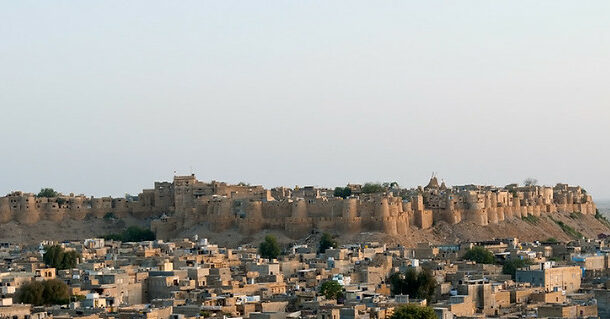 https://en.wikipedia.org/wiki/Jaisalmer_Fort
https://en.wikipedia.org/wiki/Jaisalmer_Fort Jaisalmer Fort is considered one of the world’s oldest living forts as one-fourth of the city’s population still resides inside the walls of the fort. It’s not known for certain just how old the fort is but if local legend is to be believed it was constructed in 1156 CE.
With the fort’s age and its ever-growing population, the buildings themselves have many architectural problems and obstacles to overcome. There are many restoration efforts going on to make the fort a safer and better place to live.
The Maunsell Sea Forts - England
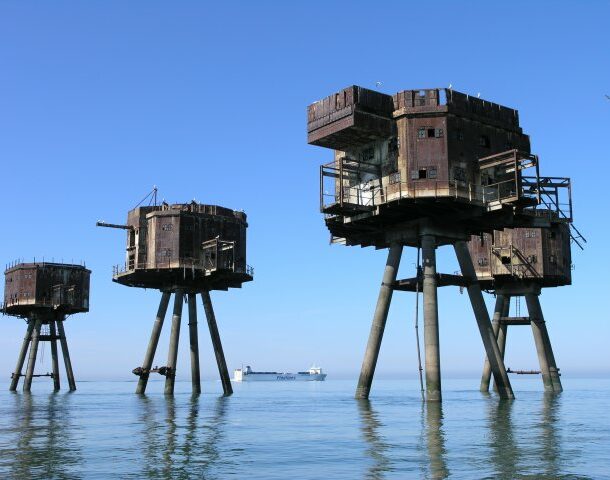 https://www.tusktravel.com/blog/fortresses-in-the-world/
https://www.tusktravel.com/blog/fortresses-in-the-world/ These fortifications were designed during WWII specifically as a countermeasure against German bombers that would target London and Liverpool. It’s comprised of a number of shack-like bungalows coming out of the water and they were each equipped with artillery to take down planes overhead. After the war, they were largely abandoned and left in disrepair but two of the shacks still stand to this day, however they are off-limits and can only be seen by boat.
Agra Fort - Agra, India
 https://www.tusktravel.com/blog/fortresses-in-the-world/
https://www.tusktravel.com/blog/fortresses-in-the-world/ While it’s often overshadowed by its more famous neighbor the Taj Mahal Agra Fort is a just as impressive and beautiful building in the city of Agra. It was constructed in the 16th century from red sandstone by the Mughal Emperor Akbar and took over 4,000 workers eight years to complete. The fort is just over half a mile long and has walls as high as 68 ft tall.
Over the years, the fort has seen several additions, including a private palace for Akbar’s son Jahangir, a serene Pearl Mosque made entirely of white marble, and the “Hall of the Private Audience” which is primarily used for entertaining distinguished guests.
Cheyenne Complex - Colorado, USA
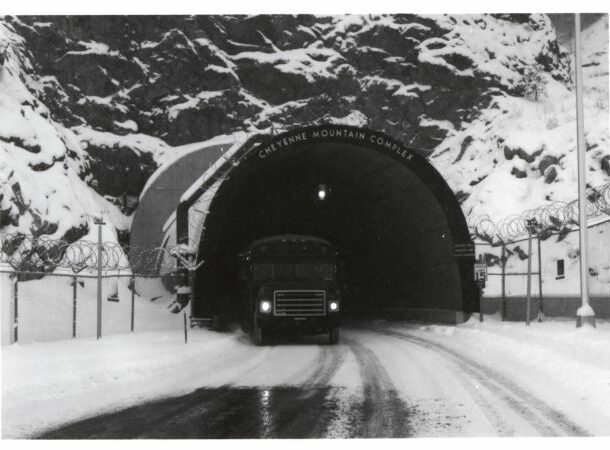 https://interestingengineering.com/culture/21-of-the-great-fortresses-around-the-world
https://interestingengineering.com/culture/21-of-the-great-fortresses-around-the-world What is likely the most modern fortress we’ll talk about is the Cheyenne Complex. It was at one point a well-kept military secret but now we all know about the fortress the American government built into the side of a mountain.
Its initial use was to monitor North American airspace and watch out for missiles, space systems, and foreign aircraft to provide an early warning system for the U.S. Military Forces.
The complex is built under 600 meters of granite and it stretches over 5 acres. It contains 15 subterranean facilities that are three stories tall, each earthquake and explosion-proof.
Alcázar of Toledo - Spain
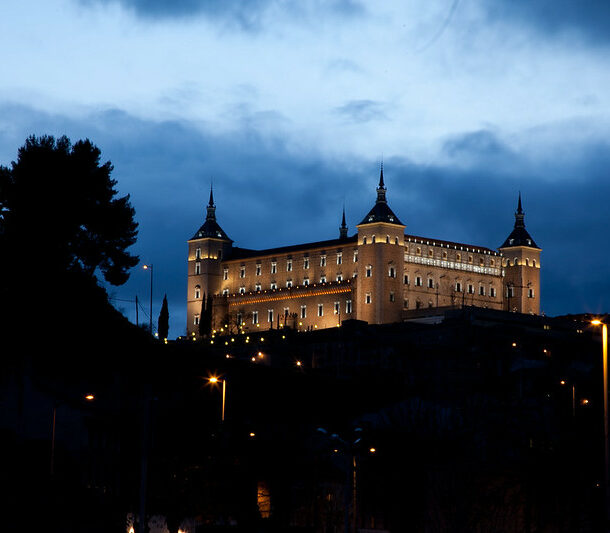 https://interestingengineering.com/culture/21-of-the-great-fortresses-around-the-world
https://interestingengineering.com/culture/21-of-the-great-fortresses-around-the-world What was once a 3rd Century Roman Palace, was transformed into a stone fort on the highest point in Toledo, Spain. The restoration and conversion of the palace was led by Once Charles I (also Holy Roman Emperor Charles V) and his son Philip II of Spain in the mid-16th century.
Its famed use and success during the Spanish Civil War has made the fort an important historical site for many Spanish nationalists.
These days it has been fully restored and is used as a library and museum.
Spiš Castle - Slovakia
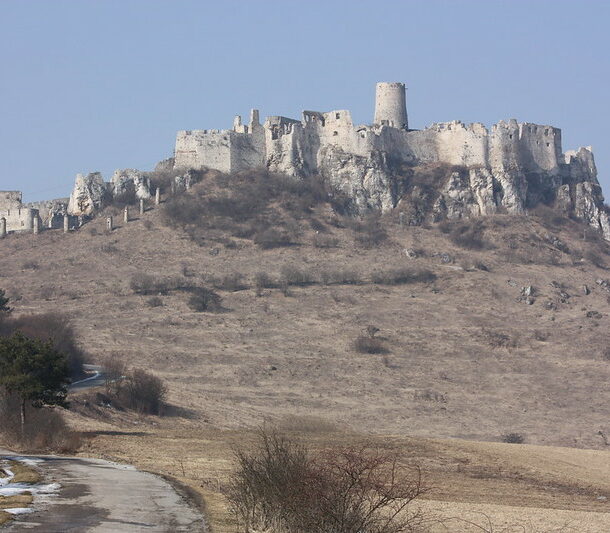 https://interestingengineering.com/culture/21-of-the-great-fortresses-around-the-world
https://interestingengineering.com/culture/21-of-the-great-fortresses-around-the-world Spiš Castle is situated above the town of Spišské Podhradie and the village of Žehra in Slovakia. The site covers over 41,000 km and was made a world heritage site in 1990.
The castle was built during the 12th Century and is a combination of Romanesque, Gothic, and Renaissance Architecture. The castle was tragically destroyed by a fire in 1780 and afterwards, the castle fell into disrepair until the late 20th century when restoration efforts began. They have rebuilt most of the fortifications as of today.
Bourtange Fort - Netherlands
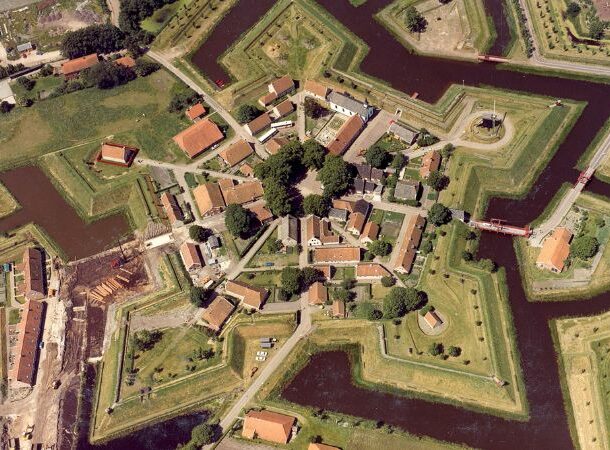 https://interestingengineering.com/culture/21-of-the-great-fortresses-around-the-world
https://interestingengineering.com/culture/21-of-the-great-fortresses-around-the-world Bourtange Fort was built during the Eighty Years’ War between 1568 and 1648. It was commissioned and built by William I of Orange; he had it built as a way to control the only road between Germany and the Spanish-controlled city of Groningen.
The fort got its signature star form in the 18th century, shortly after in the next century the military abandoned it and it became a peaceful village. Now it acts as an open-air museum and has had much of 18th-century architecture rebuilt.
Murud-Janjira – Murud, India
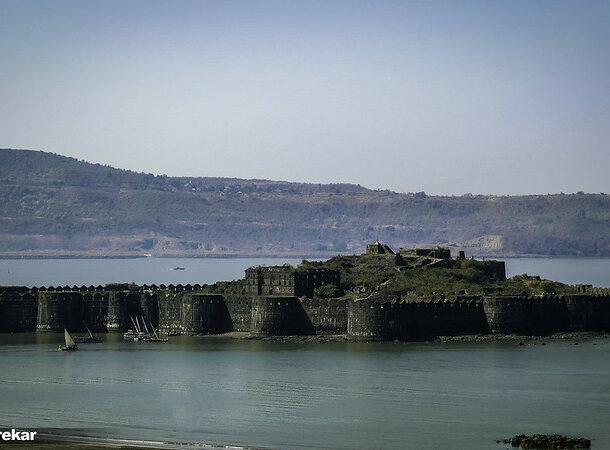 https://en.wikipedia.org/wiki/Murud-Janjira#cite_note-8
https://en.wikipedia.org/wiki/Murud-Janjira#cite_note-8 The Murud-Janjira is a massive island fortress located off the coast of India. It is completely surrounded by 40 ft high walls and 19 rounded bastions. There is only one entrance large enough for multiple people and equipment to move through.
Although it was originally built in the 13th century, the main fortifications of the fort date back to the late 17th century.
The fortress is mostly in ruins now and there are many cannons that have been there for centuries. These cannons are now rusting into the building as the ruin ages.
Le Mont-Saint-Michel – Normandy, France
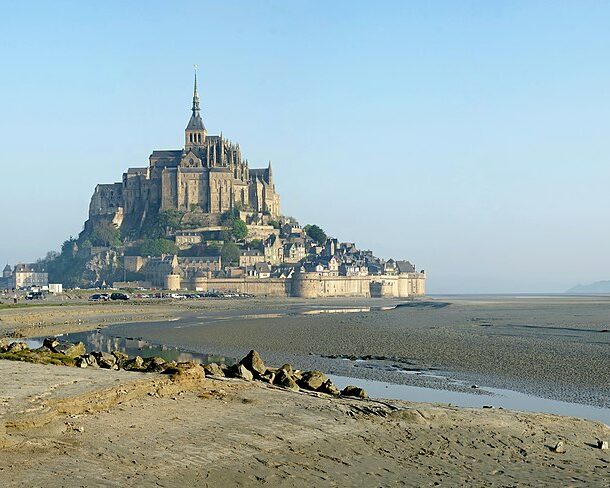 https://en.wikipedia.org/wiki/Mont-Saint-Michel
https://en.wikipedia.org/wiki/Mont-Saint-Michel Le Mont-Saint-Michel is known for being one of France’s most impenetrable fortresses. It’s large walls and fortifications as well as it being surrounded by water except for one long land-strip. This land-strip will often be submerged in water when the tide is high making land attacks and naval attacks nearly impossible.
It was originally built during the 10th century and has been added onto over the years. The fort saw most of its use during the 100-year war between England and France.
Edinburgh Castle – Edinburgh, Edinburgh, Scotland
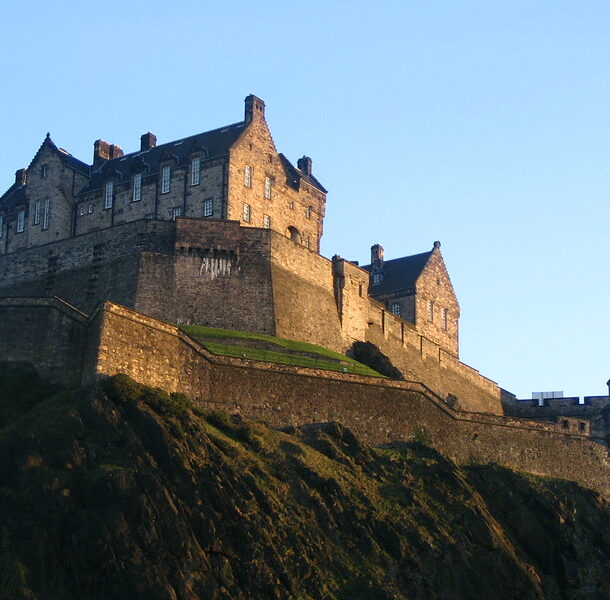 https://www.historicenvironment.scot/visit-a-place/places/edinburgh-castle/history/
https://www.historicenvironment.scot/visit-a-place/places/edinburgh-castle/history/ Edinburgh Castle is positioned atop a protruding rock called Castle Rock. The castle has had connections to Scottish royalty dating back nearly 1000 years. Iron Age warriors defended the location before the castle was built, and the nation’s oldest poetry tells of a war band feasting here for a year before riding to their deaths in battle.
The castle shifted control between the British and the Scots during the Wars of independence. Now the castle stands as a national icon and is Scotland’s biggest tourist attraction.
Hohensalzburg Fortress – Salzburg, Austria
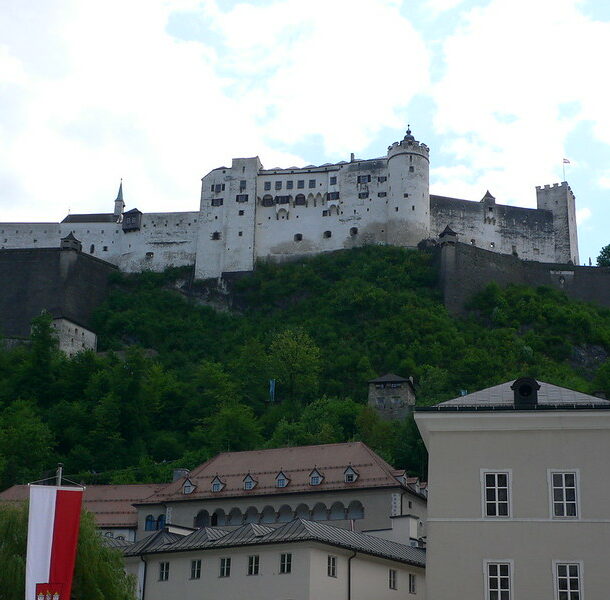 https://en.wikipedia.org/wiki/Hohensalzburg_Fortress
https://en.wikipedia.org/wiki/Hohensalzburg_Fortress The original construction of Hohensalzburg was done in the 11th century but a castle and towers were added to the building in the 15th century. It remains today as one of the largest medieval castles in all of Europe. The fortifications of the castle were so great that most armies avoided it and almost all of the ones that did attack it were unsuccessful.
It is also home to an ancient railway that was constructed in 1515 that provided freight access to the upper part of the fortress. It still exists today and is one of the world’s oldest functioning railways.
Citadel of Aleppo – Aleppo, Syria
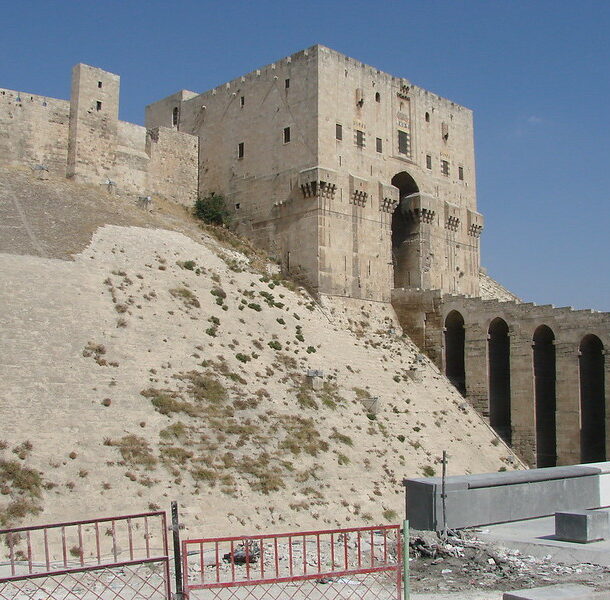 https://architectureofcities.com/castles
https://architectureofcities.com/castles The city of Aleppo is one the oldest continually inhabited cities in the world and at the center of the city sits the Citadel of Aleppo. The majority of the citadel’s construction dates back to the 12th and 13th centuries but the history of the location being used as a military outpost dates even further back.
A large portion of the citadel was destroyed during the Syrian Civil War and while much of the citadel is in ruin there are active restoration efforts to rebuild it going on today.
Alhambra – Granada, Andalusia, Spain
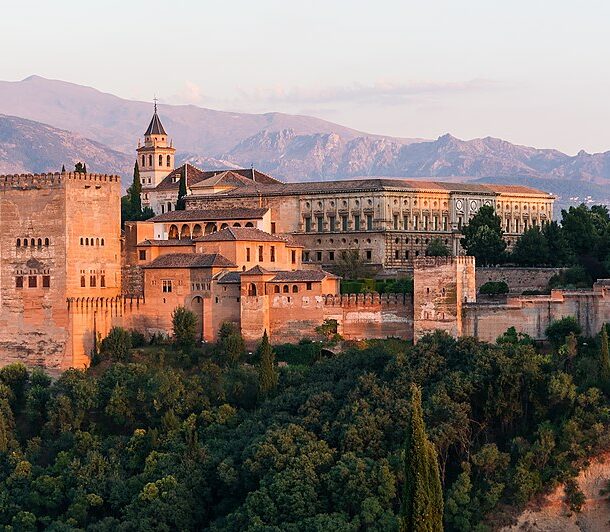 https://en.wikipedia.org/wiki/Alhambra
https://en.wikipedia.org/wiki/Alhambra The construction of the Alhambra can be traced all the way back to the mid-13th century but many of its standing buildings have been renovated and changed over the years. It quickly became one of Spain’s most important and impenetrable fortresses. It wasn’t until 1492 that the fortress was finally conquered and taken over by Spanish forces. Under Spanish rule, the interior of the building was converted into a large palace.
Despite the changes that have been made the Alhambra remains one the most well-preserved examples of ancient Islamic architecture in the Islamic community.
Masada – Arad, Israel
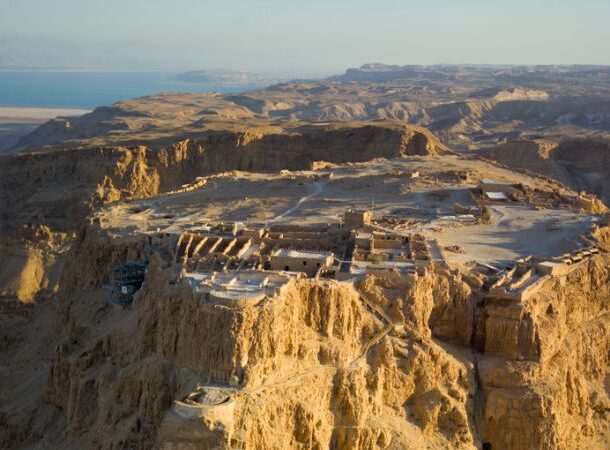 https://www.touristisrael.com/masada-dead-sea/848/#:~:text=History%20of%20Masada,Masada%20became%20their%20last%20stronghold.
https://www.touristisrael.com/masada-dead-sea/848/#:~:text=History%20of%20Masada,Masada%20became%20their%20last%20stronghold. The fortress was built in the year 30 BCE by King Herod. During the great revolt against Rome in the year 68 CE, the site was conquered by a group of Jewish zealots who took residency in the fort. Later in the year 71 CE Rome sieged the fort and when it was clear that they would take control of the fort the Jewish Zealots chose to end their own lives rather than fall into Roman hands.
The Fortress remains a symbol of courage, heroism, and martyrdom to this day and there have been many restoration efforts to honor the Zealots sacrifice.
Königstein Fortress – Königstein, Saxony, Germany
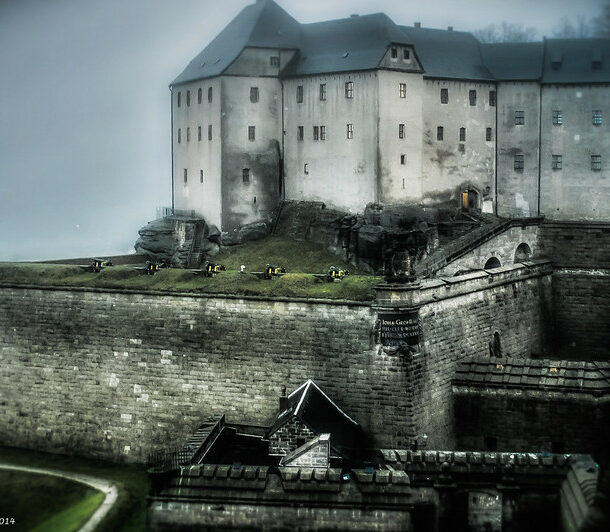 https://en.wikipedia.org/wiki/K%C3%B6nigstein_Fortress
https://en.wikipedia.org/wiki/K%C3%B6nigstein_Fortress This Fort is best known for being home to the 2nd deepest well in all of Europe. The well is just over 500 ft deep and would provide a near-limitless supply of water for soldiers during long battles and sieges. Over the years it’s been used for a variety of different things including a fortress, a military hospital during WWII, and it was even a prison for centuries.
The fort was converted to be an open-air military museum in 1955 and it remains as such to this day. During its active military use it was never conquered and eventually grew a reputation as being impenetrable.
Malbork Castle – Malbork, Pomeranian, Poland
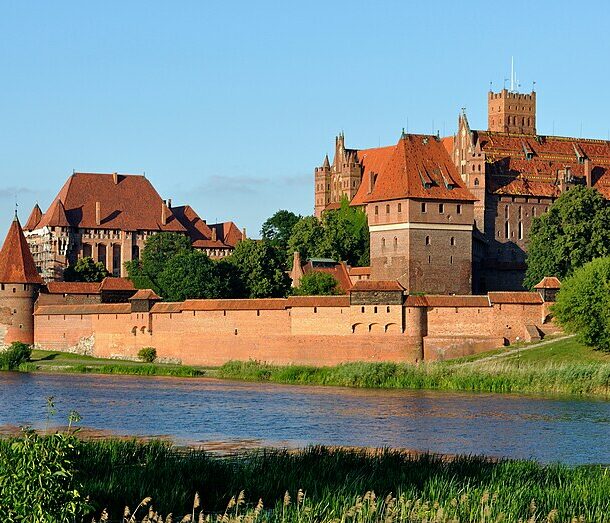 https://en.wikipedia.org/wiki/Malbork_Castle
https://en.wikipedia.org/wiki/Malbork_Castle Malbork Castle was built by the Knights of the Teutonic Order in the 13th century as a fortification and point of power for battles. It stayed as the home to the order until it began to be used as a royal residence in 1466.
Much later during Hitler’s time of power, it was used as a reference and guide to building the Third Reich’s forts and castles. During this time much of the building was destroyed when it saw many battles during WWII but the building underwent heavy renovations that were later finished in 2016.
Windsor Castle – Windsor, Berkshire, England
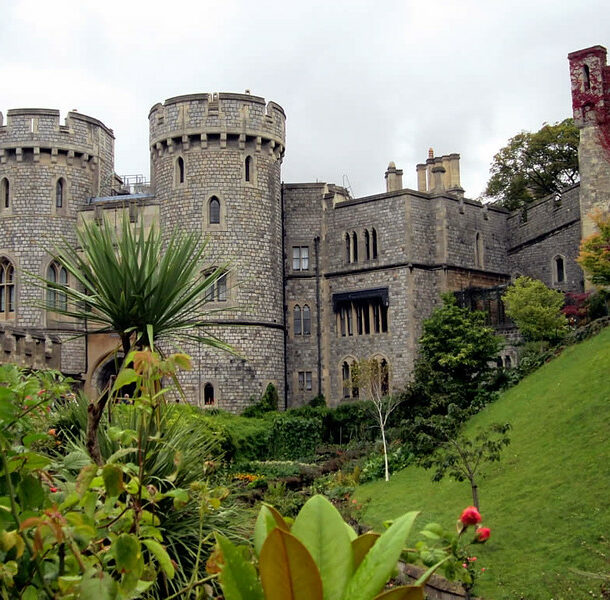 https://www.townandcountrymag.com/society/tradition/a40058863/windsor-castle-history/
https://www.townandcountrymag.com/society/tradition/a40058863/windsor-castle-history/ Windsor Castle is known worldwide for its beautiful architecture it is also known for being the home of many different monarchs over the years all of which have left their own renovations as a lasting reminder of their time in power. It was originally built by William the Conqueror in 1068 and was originally used exclusively as a military fortification. Henry II was the king that transformed Windsor into a half-fort, half-gothic palace.
It is now open to the public and has even been the venue for a number of Royal Weddings for the Royal Family.
Chittorgarh Fort – Chittor, Rajasthan, India
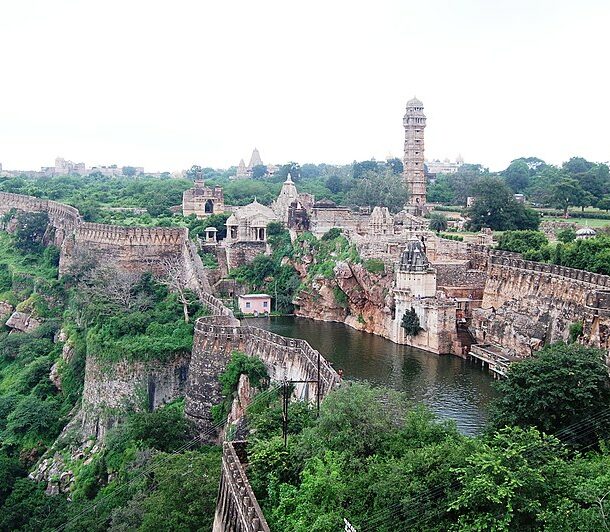 https://en.wikipedia.org/wiki/Chittor_Fort
https://en.wikipedia.org/wiki/Chittor_Fort The origins of this fort is unknown and most locals only know rumors and theories as to what time period it was built in. Historical research that was done in and around the fort found tablets with ancient script that date back to the 9th century but if locals and stories are to be believed it’s origins date even older than that.
Most of the defenses and walls still stand today and it houses 65 historic structures, which include four palaces, 19 large temples, 20 large water bodies, and 4 memorials. Chittorgarh is one of the largest forts in all of India and has been listed as a historical site.
The Tower of London- London, England
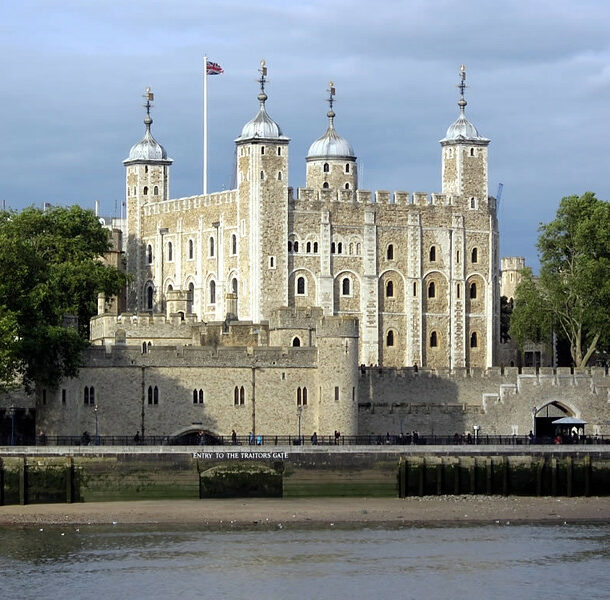 https://architectureofcities.com/castles
https://architectureofcities.com/castles Despite the Tower of London’s attraction to tourists these days its intended purpose was to be a fort and outpost to protect the city of London. It was originally built by William the Conqueror in 1078 CE and it’s since been used for many different purposes. Today the Tower of London houses the famous English Crown Jewels but other than a fortification it has been a currency mint and even a jail. It’s also said to be haunted by the ghosts of people who were executed there.
Dover Castle- Dover, Kent, England
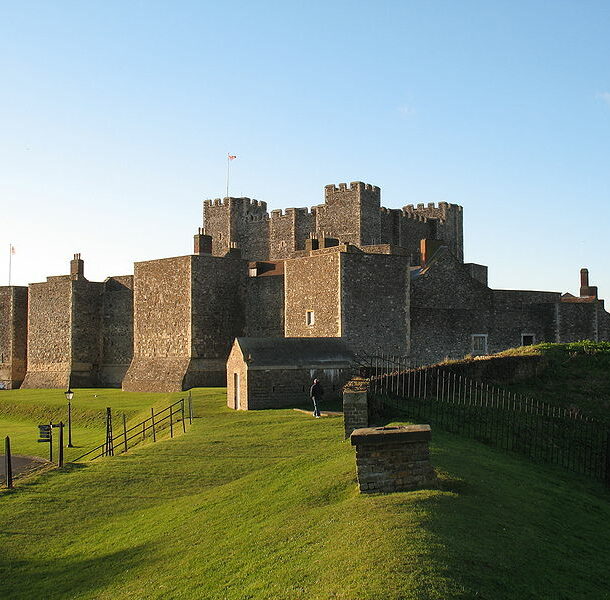 https://architectureofcities.com/castles
https://architectureofcities.com/castles Dover Castle has been an incredibly important strategic defense for English armies for centuries. So much so that it has garnered the nickname “the key to England” by historians. The majority of the castle that stands today dates from the 12th Century and was built by Henry II. An attempt was made to besiege the castle by the French in the 13th century, but the fortifications were too great and the French army was repelled.
It was even used in WWI and WWII to store supplies and munitions as well as remain an important point of defense against England’s enemies.
The Vatican
 https://architectureofcities.com/castles
https://architectureofcities.com/castles While it’s hard to believe these days that the famed Vatican was once a nearly impenetrable fortress it does not change the fact that that was its intention. It was designed in the 9th century to protect the treasures of the Vatican from raiders and rival factions in Rome. The attached Castel Sant’Angelo is the strongest part of the Vatican’s fortifications and has been used many times during wartime to protect the Pope and other religious figures.
To this day it retains an important role in maintaining religious power and an important landmark to the Catholic faith.
Castle of the Moors – Sintra, Lisbon, Portugal
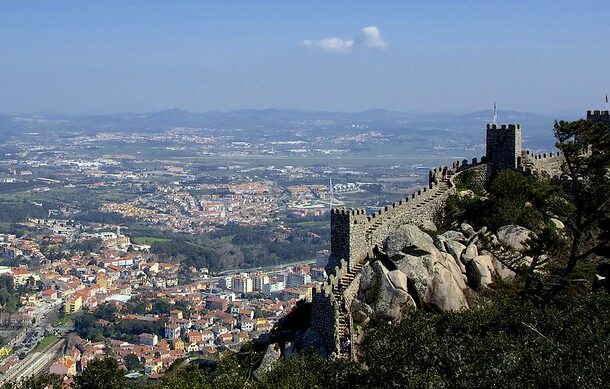 https://www.parquesdesintra.pt/en/parks-monuments/the-moorish-castle/history/
https://www.parquesdesintra.pt/en/parks-monuments/the-moorish-castle/history/ The Castle of Moors was built all the way back in the 8th and 9th centuries. Since its creation, it has only ever changed hands one time when Moorish forces gave it over without any fight. Today The Castle of the Moors is listed as a UNESCO World Heritage site along with several other notable buildings in Sintra and is referenced in the architecture world as one of the finest examples of Moorish architecture of that time period.
The castle has been an ongoing archaeological excavation site since 1976 that has had countless discoveries in regard to the history of this site and its many inhabitants.
Ksar of Aït Benhaddou – Aït Benhaddou, Morocco
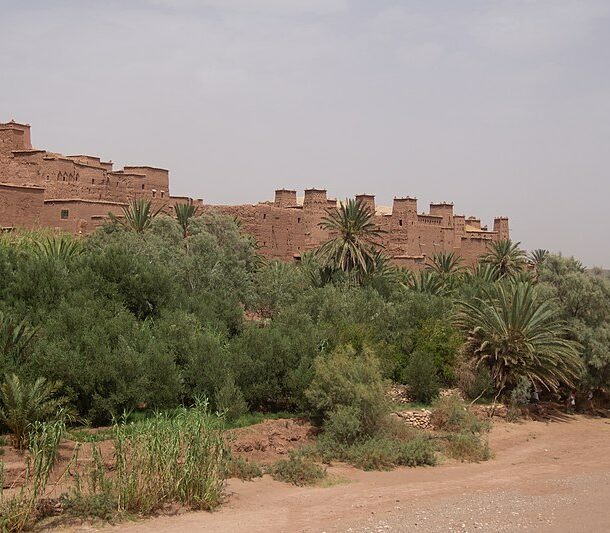 https://moroccanzest.com/ait-benhaddou/
https://moroccanzest.com/ait-benhaddou/ This fort or Kasbah was originally built in the 11th century and has been consistently inhabited for 900 years. Most of the buildings that stand there today are from the 17th century and are walled in by very formidable wall defenses.
The fort has been featured in many shows and movies such as Game of Thrones, Laurence of Arabia, and Gladiator. Sources say that about 98 families lived in the Ksar until the 1940s but these days there are only five families living in Kasbah Ait Benhaddou. One of these families even turned her house into a traditional coffee shop to immerse visitors in the lifestyle of natives.
The Acropolis- Athens
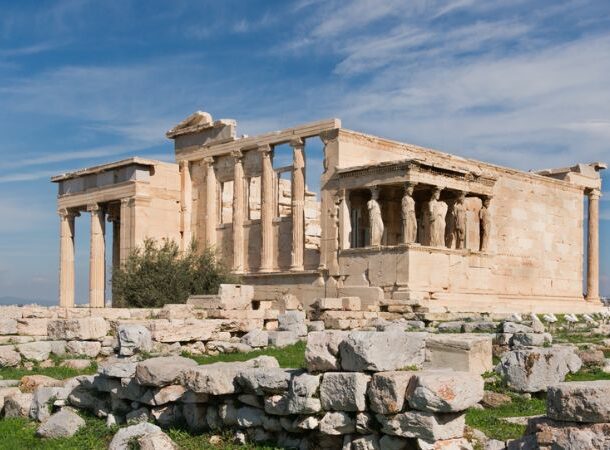 https://www.history.com/topics/ancient-greece/acropolis
https://www.history.com/topics/ancient-greece/acropolis Despite the now historical landmark being one of the most famous fortresses in the world it has been taken over many times throughout its storied history. The Acropolis has been many things over the years, it’s been a home to kings, a citadel, a mythical home of the gods, a religious center, and now a tourist attraction.
It has withstood bombardment, earthquakes, and countless battles and it still stands today as a historical and cultural landmark for Greece. To get an idea of how old the Acropolis is you can take a look at it’s stonework which is said to be made from stone and rocks that date back all the to the Cretaceous period.
Derawar Fort – Punjab, Pakistan
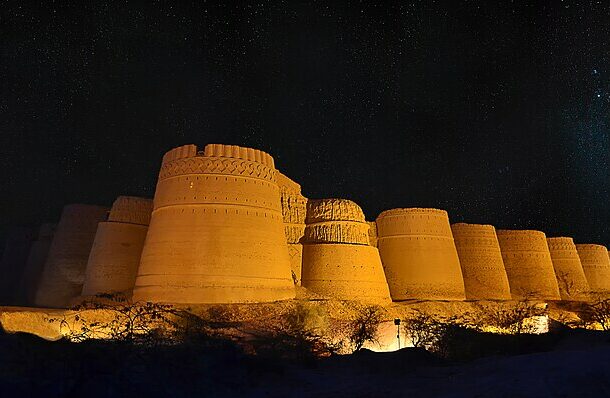 https://en.wikipedia.org/wiki/Derawar_Fort
https://en.wikipedia.org/wiki/Derawar_Fort Derawar Fort was built in the 9th century by Rai Jajja Rhati as a tribute to emperor Rawal Deoraj Bhati. It remained nearly unchanged until the 1700s when it was taken over by a different tribe who then renovated the fort.
The fort was once again left untouched until recently in 2019 when the provincial government funded a renovation effort of the fort where work was done on some collapsed walls and additional conservation efforts were made.



























